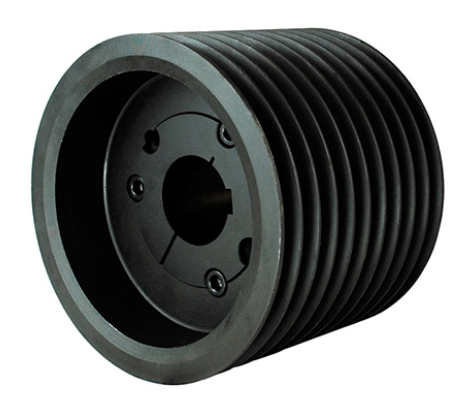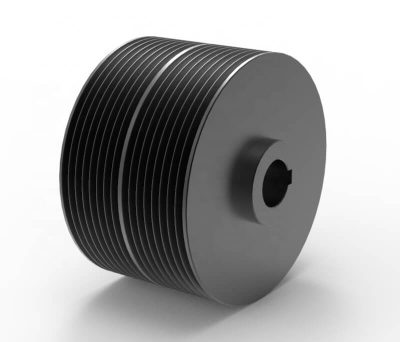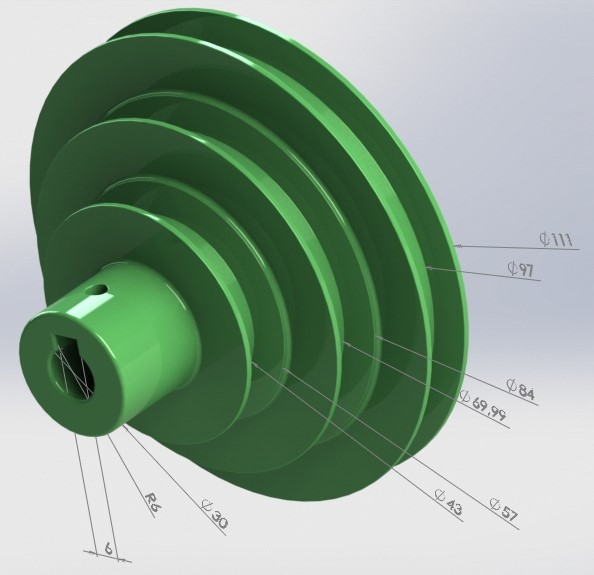Product Description
multiple pulleys stainless steel flat mount nylon pulley v belt wheels flat wire rope sheave aluminum bearing Oversized Ceramic Electromagnetic Clutch Metal
Application of multiple pulleys
Multiple pulleys are a type of simple machine that can be used to lift heavy objects or to change the direction of a force. When multiple pulleys are used together, they can be used to increase the mechanical advantage of the system.
The mechanical advantage of a pulley system is the ratio of the force that is applied to the system to the force that is required to lift the load. For example, a system with 2 pulleys has a mechanical advantage of 2. This means that if you apply 100 pounds of force to the system, the load will be lifted with a force of 200 pounds.
Multiple pulleys are used in a variety of applications, including:
- Cranes: Cranes use multiple pulleys to lift heavy objects.
- Winches: Winches use multiple pulleys to pull or lift objects.
- Flagpoles: Flagpoles use multiple pulleys to raise and lower flags.
- Sails: Sails use multiple pulleys to control the direction of a boat.
- Lifts: Lifts use multiple pulleys to move people and objects between floors.
- Elevators: Elevators use multiple pulleys to move people and objects between floors.
- Bicycles: Bicycles use multiple pulleys to change the gears and to brake.
- Sewing machines: Sewing machines use multiple pulleys to move the needle and the fabric.
- Welding machines: Welding machines use multiple pulleys to move the welding torch.
- Grinders: Grinders use multiple pulleys to move the grinding wheel.
Multiple pulleys are a versatile and reliable type of simple machine that can be used in a variety of applications. They are easy to use and maintain, and they can help to make work easier and safer.
Here are some of the benefits of using multiple pulleys:
- They can increase the mechanical advantage of a system.
- They can be used to lift heavy objects.
- They can be used to change the direction of a force.
- They are easy to use and maintain.
- They can help to make work easier and safer.
If you are looking for a way to lift heavy objects or to change the direction of a force, a multiple pulley system is a great option.
/* January 22, 2571 19:08:37 */!function(){function s(e,r){var a,o={};try{e&&e.split(“,”).forEach(function(e,t){e&&(a=e.match(/(.*?):(.*)$/))&&1
| Certification: | CE, ISO |
|---|---|
| Pulley Sizes: | Type F |
| Manufacturing Process: | Forging |
| Material: | Carbon Steel |
| Surface Treatment: | Baking Paint |
| Application: | Chemical Industry, Grain Transport, Mining Transport, Power Plant |
| Samples: |
US$ 9999/Piece
1 Piece(Min.Order) | |
|---|

How do advancements in materials and technology impact the design of modern wall mount pulleys?
Advancements in materials and technology have a significant impact on the design of modern wall mount pulleys, leading to improved performance, durability, and functionality. Here’s a detailed explanation:
1. Lightweight and High-Strength Materials:
Modern wall mount pulleys benefit from the use of lightweight yet high-strength materials such as aluminum alloys, stainless steel, or engineered plastics. These materials offer excellent strength-to-weight ratios, allowing for the design of pulleys that are both strong and lightweight. The use of lightweight materials reduces the overall weight of the pulley system, making it easier to install and operate.
2. Enhanced Durability:
New materials and manufacturing techniques contribute to enhanced durability in modern pulley designs. Materials with improved resistance to corrosion, wear, and fatigue are employed to ensure longevity, even in challenging environments. This durability extends the lifespan of the pulleys and reduces the need for frequent replacements.
3. Low-Friction Coatings and Bearings:
Advancements in technology have led to the development of low-friction coatings and high-quality bearings for pulley systems. These coatings and bearings minimize friction, resulting in smoother operation, reduced wear, and improved efficiency. Low-friction pulleys require less force to operate, making them more user-friendly and energy-efficient.
4. Design Optimization:
Materials and technology advancements allow for design optimization in modern wall mount pulleys. Computer-aided design (CAD) software and simulation tools enable engineers to analyze and optimize the pulley geometry, ensuring optimal load distribution and stress management. This results in pulleys that can handle higher loads, have reduced weight, and exhibit improved performance.
5. Innovative Features and Accessories:
Advancements in technology have facilitated the incorporation of innovative features and accessories into modern wall mount pulleys. For example, some pulleys now include built-in braking systems, locking mechanisms, or quick-release features for added safety and convenience. Additionally, pulley systems may integrate with smart home technology, allowing for remote control or automation of lifting operations.
6. Precision Manufacturing:
Advanced manufacturing processes, such as CNC machining and 3D printing, enable the production of complex and precise pulley components. These processes ensure consistent quality and accuracy in the manufacturing of modern pulleys, resulting in smoother operation, better alignment, and improved overall performance.
Overall, advancements in materials and technology have revolutionized the design of modern wall mount pulleys, leading to lighter, stronger, and more durable products. With improved friction reduction, optimized designs, innovative features, and precise manufacturing, modern pulleys offer enhanced performance and functionality for a wide range of lifting and rigging applications.

Are there specific safety considerations when using wall mount pulleys for lifting or rigging?
Yes, there are specific safety considerations that should be taken into account when using wall mount pulleys for lifting or rigging purposes. Here’s a detailed explanation:
1. Load Capacity:
It is crucial to ensure that the wall mount pulleys used for lifting or rigging are rated for the intended load capacity. Exceeding the load capacity can lead to pulley failure, causing accidents or damage. Always refer to the manufacturer’s specifications and guidelines to determine the appropriate load capacity of the pulleys.
2. Proper Installation:
Wall mount pulleys should be installed securely and according to the manufacturer’s instructions. The mounting surface should be strong and capable of supporting the weight and forces involved. It is important to use appropriate hardware and ensure proper anchoring to prevent pulley detachment or failure during lifting or rigging operations.
3. Inspections and Maintenance:
Regular inspections are essential to identify any signs of wear, damage, or deterioration in the pulleys or the mounting hardware. Inspect the pulleys, ropes, cables, or other lifting components for any fraying, corrosion, or deformation. Any damaged or worn-out parts should be replaced immediately. Additionally, perform routine maintenance, such as cleaning and lubrication, to ensure smooth operation and prevent premature failure.
4. Proper Rigging Techniques:
Using proper rigging techniques is critical for safe lifting operations. Ensure that the load is securely attached to the pulley system, and use appropriate slings, hooks, or connectors that are rated for the load. Follow industry best practices for rigging, including proper load balancing, avoiding sharp edges or abrasive surfaces, and maintaining a clear path for the load to prevent entanglement or interference.
5. Personal Protective Equipment (PPE):
When lifting or rigging with wall mount pulleys, it is important to use the appropriate personal protective equipment. This may include safety gloves, safety glasses, hard hats, or other protective gear depending on the specific lifting environment and associated hazards.
6. Training and Competence:
Only trained and competent individuals should operate wall mount pulleys for lifting or rigging purposes. Proper training ensures knowledge of safe practices, load limits, and proper use of equipment. Adequate supervision and adherence to established protocols help minimize the risk of accidents and ensure the safety of personnel involved.
By considering these safety considerations and implementing appropriate measures, the use of wall mount pulleys for lifting or rigging can be conducted safely and effectively, reducing the risk of accidents and promoting a safe working environment.

What materials are often used in the construction of wall mount pulleys?
Wall mount pulleys are commonly constructed using various materials that provide durability, strength, and smooth operation. Here are some materials often used in the construction of wall mount pulleys:
1. Metal:
Metal, such as steel or aluminum, is a popular choice for wall mount pulleys. It offers excellent strength, durability, and resistance to wear and corrosion. Metal pulleys are capable of handling heavy loads and are commonly used in industrial and heavy-duty applications.
2. Plastic:
Plastic pulleys, typically made from high-strength engineering plastics like nylon or polyethylene, are widely used in wall mount pulley construction. Plastic pulleys are lightweight, cost-effective, and resistant to rust and corrosion. They are commonly used in applications where weight reduction, noise reduction, or non-conductive properties are desired, such as in household or recreational settings.
3. Composite Materials:
Composite materials, which are a combination of different materials, are also utilized in wall mount pulley construction. These materials can include a mix of fibers (such as fiberglass or carbon fiber) embedded in a resin matrix. Composite pulleys offer a balance of strength, light weight, and resistance to environmental factors. They are often used in applications where weight reduction, high strength-to-weight ratio, or resistance to extreme conditions is crucial.
4. Ceramic:
In specialized applications, ceramic wall mount pulleys may be used. Ceramic pulleys offer exceptional hardness, wear resistance, and resistance to high temperatures. They are commonly used in industries such as glass manufacturing, where high temperatures and abrasive conditions are present.
5. Bearings and Bushings:
In addition to the pulley material itself, wall mount pulleys often incorporate bearings or bushings to facilitate smooth rotation. These components are typically made from materials such as stainless steel, bronze, or plastic, depending on the specific application requirements.
The choice of material for wall mount pulleys depends on factors such as the intended application, load capacity, environmental conditions, cost considerations, and desired performance characteristics. Manufacturers select the most suitable material or combination of materials to ensure optimal functionality and longevity of the pulley.


editor by CX
2024-05-02
